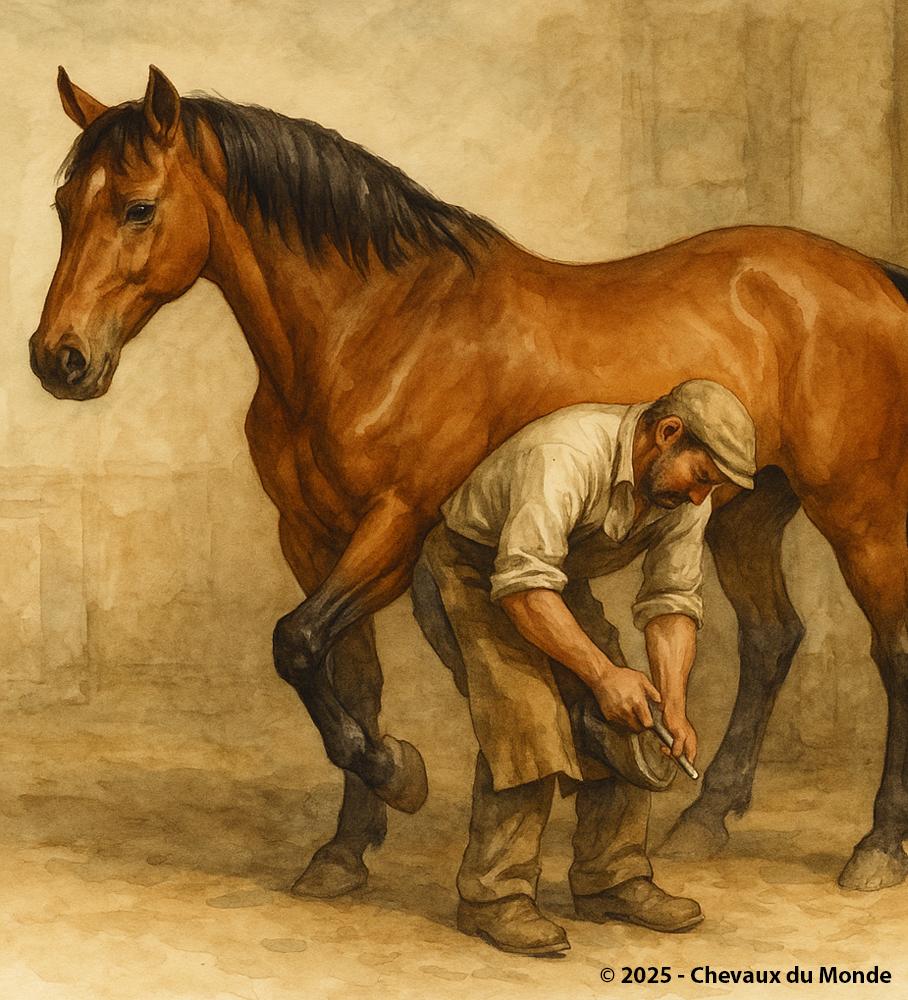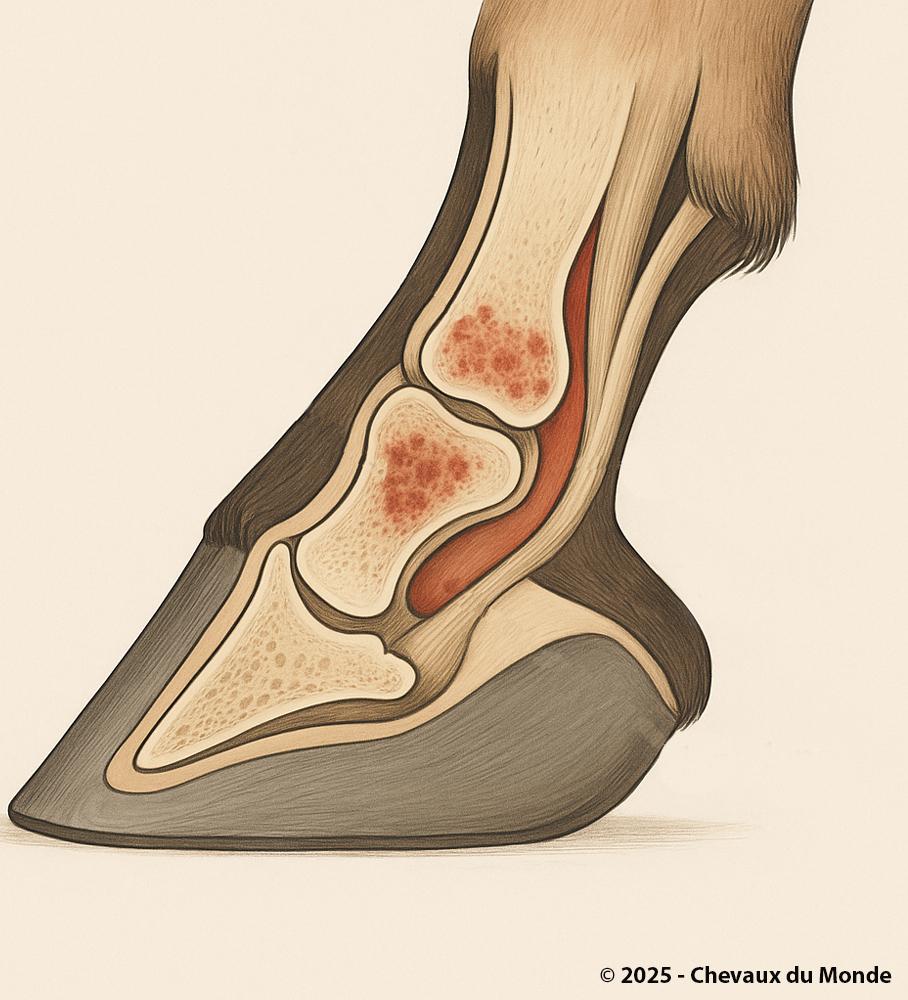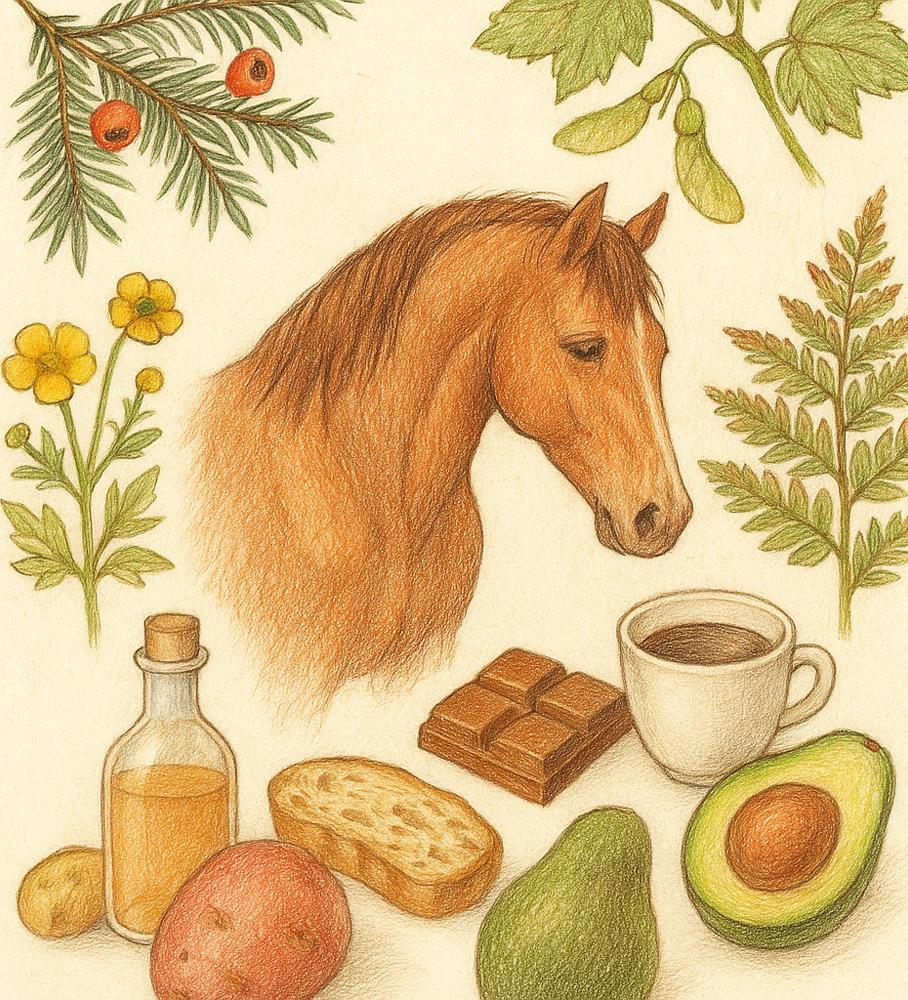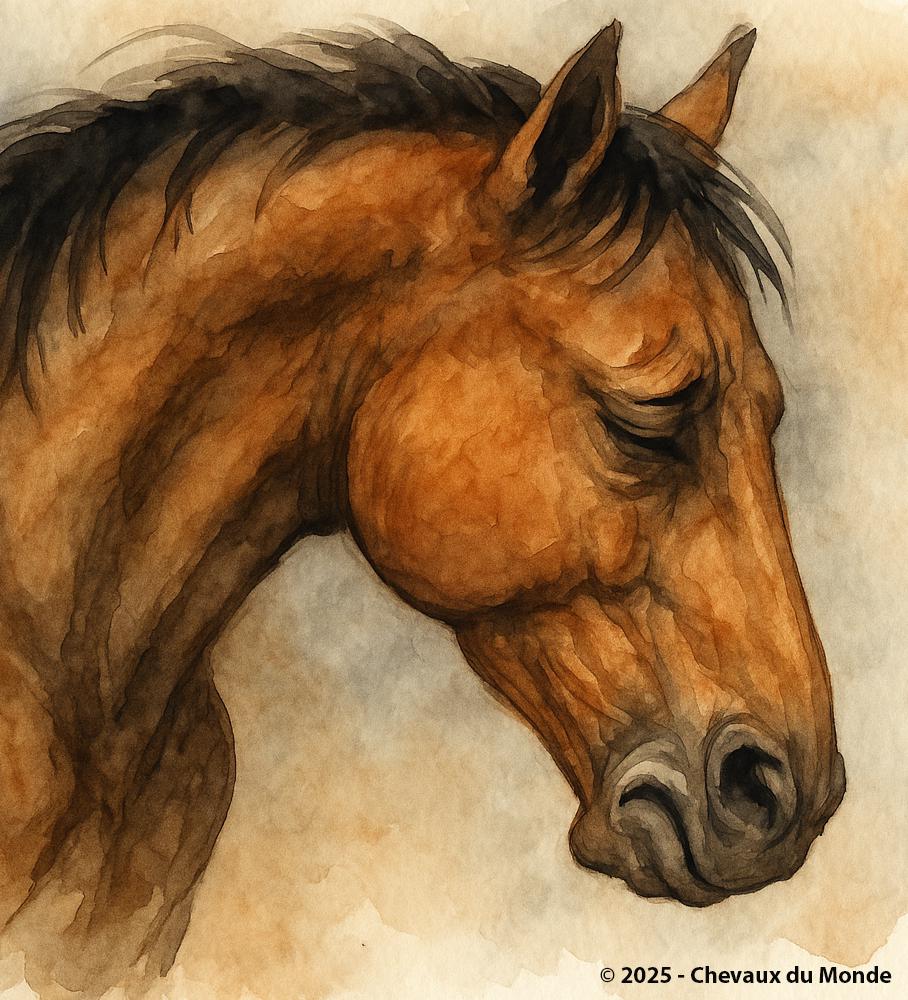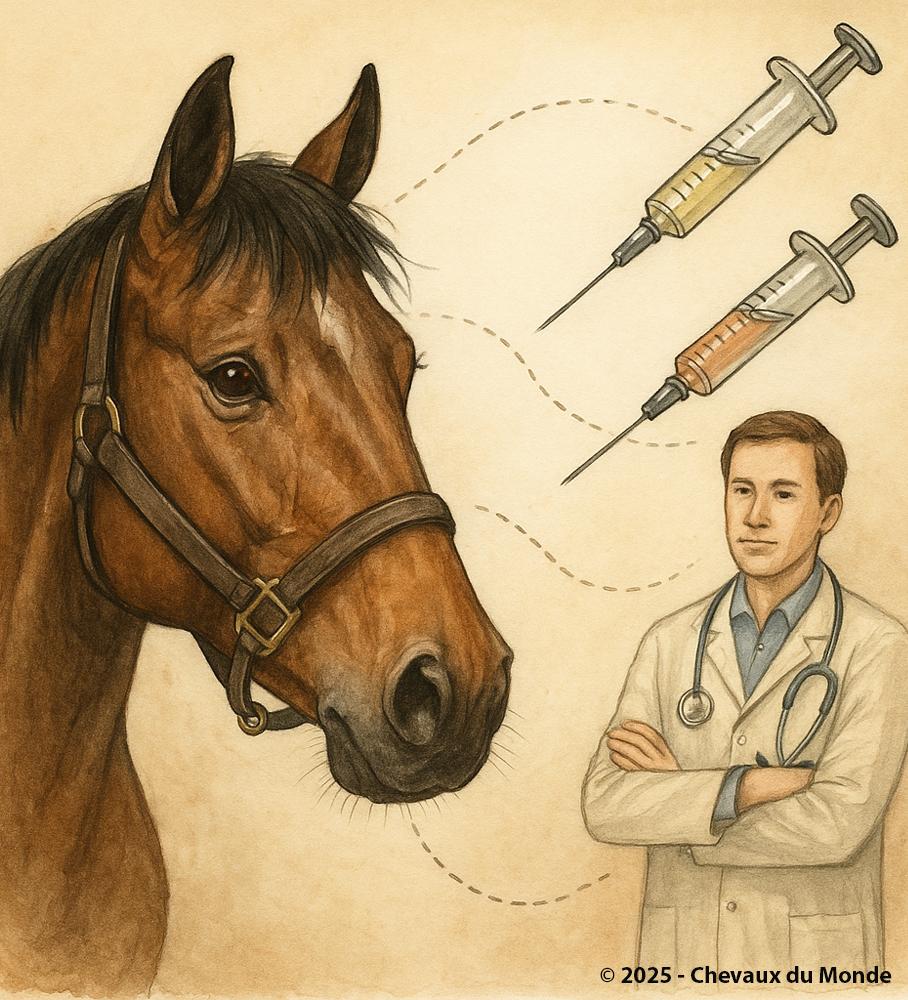HORSE COLIC: CAUSES, SYMPTOMS AND PREVENTION
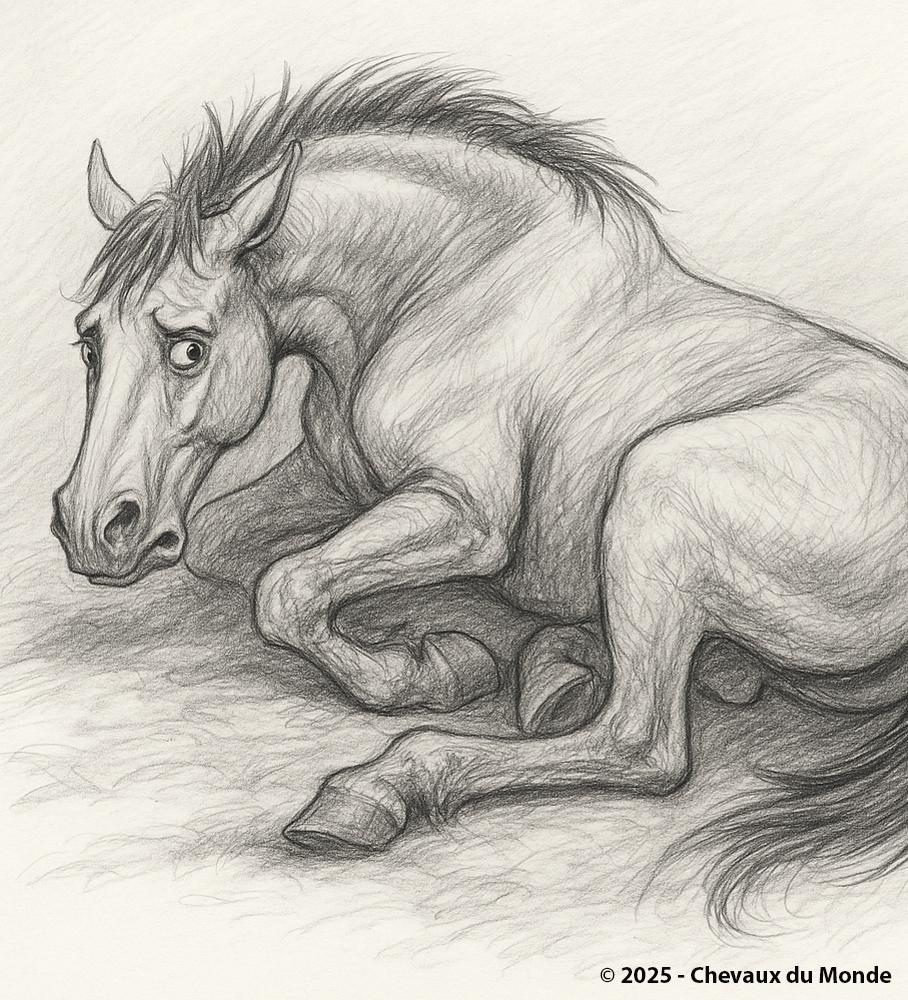
Silent pain: equine colic can be serious and requires swift attention to prevent life-threatening complications.
Equine colic is one of the most frequent and dreaded veterinary emergencies. It includes all types of abdominal pain in horses, with varying intensity, ranging from mild digestive disorders to life-threatening conditions. Understanding its causes, recognizing the symptoms, and adopting good prevention practices are essential to protect your horse’s health.
Understanding Equine Colic
What is colic?
The term colic refers to an abdominal pain syndrome caused by a dysfunction of the horse’s digestive system. Unlike humans, horses cannot vomit: any digestive disorder can therefore quickly escalate.
Why are horses particularly at risk?
- Their digestive tract is long and complex (about 30 meters).
- The small intestine is relatively mobile and prone to torsions.
- The cecum, with a capacity of around 30 liters, is sensitive to excessive fermentation.
- The horse’s inability to vomit makes any digestive blockage potentially dangerous.
Causes of Colic
Nutritional causes
- Sudden dietary changes (rapid transition from grass to hay, or introduction of a new concentrate feed).
- Excess grain or fermentable feed.
- Ingestion of sand or dirt in poor pastures.
- Poor quality water or lack of access to water.
Mechanical causes
- Impactions (accumulation of dry matter in the intestine).
- Torsions or volvulus of the small intestine or large colon.
- Incarcerations (e.g., hernia, organ displacement).
- Intussusception (a segment of the intestine sliding into another).
Parasitic causes
- Presence of strongyles, tapeworms or other intestinal parasites causing obstructions or inflammation.
Other causes
- Stress, lack of exercise, or transportation.
- Medications (e.g., excessive use of non-steroidal anti-inflammatory drugs).
- Secondary diseases (liver, kidney).
Recognizing the Symptoms
Early signs
- Horse pawing the ground, looking at its flanks.
- Loss of appetite, unusual restlessness.
- Light sweating, yawning.
- Absence of droppings or dry manure.
Moderate signs
- Horse lying down and getting up frequently.
- Rolling on the ground (attempts to relieve pain).
- Visible bloating, tense abdomen.
- Increased heart and respiratory rate.
Severe signs (life-threatening emergency)
- Intense pain, horse violently throwing itself to the ground.
- Congested or purplish mucous membranes.
- Heavy sweating.
- Shock: weakness, collapse, absence of digestive sounds.
Managing Colic
Owner’s immediate actions
- Call the veterinarian immediately.
- Put the horse in a safe, calm environment.
- Avoid letting the horse roll (risk of worsening a torsion).
- Walk the horse slowly while waiting for the vet (unless the pain is too severe).
Veterinary diagnosis
The veterinarian usually performs:
- A clinical examination (temperature, heart rate, digestive sounds).
- A rectal palpation.
- A nasogastric tube to check for reflux.
- Possibly ultrasound, blood tests, or exploratory surgery.
Possible treatments
- Medications: antispasmodics, painkillers, fluid therapy.
- Gastric or intestinal emptying (via tube or enema).
- Surgery in cases of torsion or severe obstruction.
Preventing Colic
Nutritional management
- Introduce any dietary change gradually (at least over 7–10 days).
- Divide concentrate feed into several small meals rather than one large one.
- Provide constant access to quality forage.
- Ensure clean, fresh water is always available.
Hygiene and environment
- Limit sand ingestion (place hay in a feeder instead of directly on the ground).
- Keep the living environment clean and clear.
- Check hay quality (avoid dust and mold).
Health monitoring
- Deworm regularly with a rational plan.
- Have teeth checked to avoid poor mastication.
- Closely observe the horse and note any behavioral changes.
Conclusion
Colic in horses is a major veterinary emergency. The wide variety of causes requires vigilance and quick action. Prevention, through adapted feeding, rigorous hygiene, and careful health monitoring, remains the best way to protect your horse.
“A well-fed, well-monitored, and respected horse is less likely to suffer from colic.”

